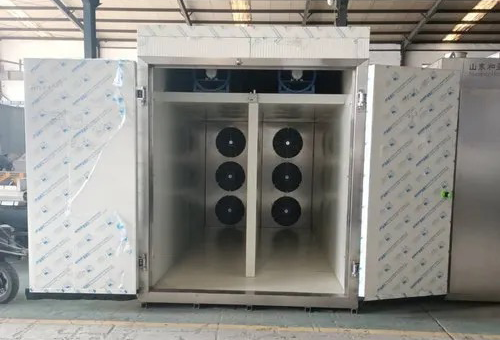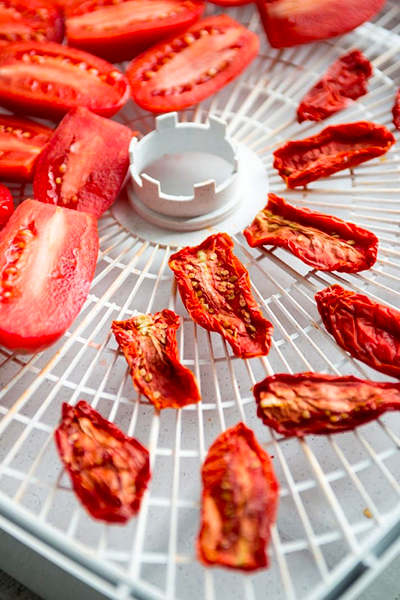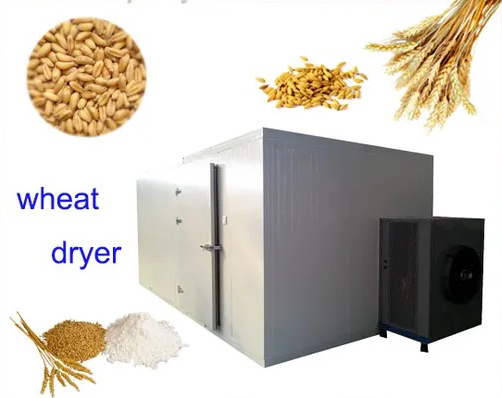
Content Menu
● 1. Dried Fruits and Fruit Leathers
● 2. Vegetables
● 3. Jerky
● 4. Snacks and Treats
● 5. Baking
● 6. Powders
● 7. Pet Treats
● 8. Yogurt
● 9. Tempering Chocolate
● 10. Broths and Stocks
● Benefits of Using a Food Dehydrator
● Conclusion
● FAQ
>> 1. What is the best temperature for dehydrating food?
>> 2. How long does it take to dehydrate food?
>> 3. Can I dehydrate frozen fruits?
>> 4. Do I need to pre-treat fruits before dehydrating?
>> 5. How should I store dehydrated foods?
● Citations:
Food dehydrators are versatile kitchen appliances that allow you to preserve food by removing moisture, which inhibits the growth of bacteria and mold. This process not only extends the shelf life of various foods but also enhances their flavors and nutritional value. In this article, we will explore a wide range of delicious and creative uses for food dehydrators, providing you with inspiration for your next culinary adventure.

1. Dried Fruits and Fruit Leathers
One of the most popular uses for a food dehydrator is making dried fruits. The dehydration process intensifies the natural sweetness of fruits, making them perfect for snacking or adding to recipes.
- Dried Apples: Slice apples thinly, sprinkle with a bit of lemon juice to prevent browning, and dehydrate until they are chewy yet crisp. These make for a great snack on their own or can be added to oatmeal or salads.
- Banana Chips: Slice bananas into thin rounds and dehydrate for a crunchy snack. You can sprinkle them with cinnamon or sugar for added flavor. These chips are not only delicious but also provide a healthy alternative to traditional potato chips.
- Fruit Leather: Blend your favorite fruits (like strawberries or peaches) with a bit of sugar and lemon juice, spread the mixture on dehydrator trays, and dry it until it forms a chewy leather. This is an excellent way to use up overripe fruit.
2. Vegetables
Dehydrating vegetables is an excellent way to preserve their nutrients while creating tasty snacks or ingredients for future meals.
- Vegetable Chips: Slice vegetables like sweet potatoes, beets, or zucchini thinly, season them with salt or spices, and dehydrate until crispy. These can serve as a healthy alternative to chips made from grains.
- Sun-Dried Tomatoes: Cut tomatoes in half, sprinkle with salt, and dehydrate until they are shriveled but still slightly moist. These make great additions to salads and pasta dishes, adding a rich flavor that fresh tomatoes cannot match.
- Herbs: Fresh herbs can be easily dried in a dehydrator. This method retains their flavor better than air drying. Simply place them on the trays and dehydrate until brittle. Dried herbs can enhance any dish's flavor profile.
3. Jerky
Making jerky at home is not only cost-effective but also allows you to control the ingredients used.
- Beef Jerky: Marinate strips of beef in your favorite marinade (soy sauce, Worcestershire sauce, garlic powder) overnight. Dehydrate until dry and chewy. Homemade jerky can be customized with various spices to suit your taste.
- Turkey Jerky: Similar to beef jerky but using turkey breast for a leaner option. The same marinating process applies here, providing a healthier protein-packed snack.
4. Snacks and Treats
Food dehydrators can be used to create various snacks that are healthier alternatives to store-bought options.
- Granola Bars: Combine oats, nuts, honey, and dried fruits; press into a flat layer on dehydrator trays and dry until firm. These bars make for an excellent on-the-go snack that is nutritious and filling.
- Trail Mix Ingredients: Dehydrate nuts and seeds to create your own trail mix components. You can also add dried fruits for sweetness, creating a balanced snack rich in fiber and protein.
- Marshmallows: Dehydrate mini marshmallows until they are crispy; they can be used in cereals or as toppings for hot chocolate. This unique treat adds texture to various desserts.
5. Baking
A food dehydrator can also assist in baking processes that require low temperatures.
- Meringues: These delicate cookies can be dried in a dehydrator instead of an oven for a lighter texture that stays fresh longer. Their airy consistency makes them perfect for desserts or as toppings.
- Iced Cookies: Place freshly iced cookies in the dehydrator on the lowest heat setting to help the icing dry quicker, avoiding any cracking or color bleeding while ensuring a shiny finish.
6. Powders
Dehydrators can help you create flavorful powders from various foods that can be used as seasonings or ingredients in recipes.
- Vegetable Powders: Dehydrate vegetables like carrots or bell peppers and then grind them into powder form. These powders can be added to soups or sauces for extra flavor without extra calories.
- Fruit Powders: Similar to vegetable powders, dried fruits can be ground into powder to use in smoothies or baking recipes. This adds natural sweetness without additional sugars.

7. Pet Treats
You can also prepare healthy snacks for your pets using a food dehydrator.
- Dog Treats: Dehydrate slices of sweet potatoes or apples (without seeds) for nutritious dog treats that your furry friend will love. These homemade treats are free from preservatives found in commercial options.
8. Yogurt
A lesser-known use for food dehydrators is making yogurt at home by maintaining a constant low temperature ideal for culturing yogurt cultures effectively.
- Homemade Yogurt: Simply heat milk to 180°F (82°C), cool it down to about 110°F (43°C), add yogurt starter culture, pour it into jars, and place them in the dehydrator set at 110°F (43°C) for several hours until thickened.
9. Tempering Chocolate
Dehydrators come in handy for the delicate process of tempering chocolate by maintaining a consistent low temperature while melting chocolate without burning it.
10. Broths and Stocks
You can dehydrate leftover broths and stocks by spreading them on dehydrator sheets and grinding them into powder form later; this allows you to rehydrate as needed for soups and stews without waste.
Benefits of Using a Food Dehydrator
Using a food dehydrator has numerous benefits:
- Cost-effective: You save money by buying produce in bulk when it's in season or on sale.
- Healthier Snacks: Homemade dehydrated snacks typically contain no additives or preservatives.
- Long Shelf Life: Dehydrated foods have an extended shelf life when stored properly.
- Nutrient Retention: Dehydrating retains more nutrients compared to other cooking methods like boiling[2][6].
Conclusion
Food dehydrators offer countless possibilities beyond just drying fruits and vegetables. From making jerky and snacks to creating unique culinary ingredients like powders and fruit leathers, these appliances can enhance your cooking experience while promoting healthier eating habits. By experimenting with different foods and techniques, you will discover new flavors and textures that elevate your meals while reducing waste.

FAQ
1. What is the best temperature for dehydrating food?
The optimal temperature varies by food type; generally, fruits should be dehydrated at 135°F (57°C), vegetables at 125°F (52°C), and meats at 160°F (71°C).
2. How long does it take to dehydrate food?
Dehydration times vary widely depending on the type of food and thickness of slices; fruits typically take 6-12 hours while meats may take up to 10 hours.
3. Can I dehydrate frozen fruits?
Yes! You can dehydrate frozen fruits directly without thawing them first; however, they may take slightly longer than fresh fruits due to their moisture content.
4. Do I need to pre-treat fruits before dehydrating?
Pre-treating fruits with lemon juice or ascorbic acid helps prevent browning and preserves color during dehydration but is not always necessary.
5. How should I store dehydrated foods?
Store dehydrated foods in airtight containers in a cool dark place; vacuum sealing is ideal for long-term storage as it prevents moisture re-entry.
Citations:
[1] https://www.mitchellcooper.co.uk/10-alternative-uses-for-dehydrators
[2] https://www.goodhousekeeping.com/appliances/a31904157/what-is-a-dehydrator/
[3] https://www.callmelore.com/fool-proof-healthy-dehydrator-recipes/
[4] https://vacuumsealersunlimited.com/how-to-use-a-food-dehydrator/
[5] https://www.freshoffthegrid.com/dehydrating-food/
[6] https://brodandtaylor.com/pages/dehydrating
[7] https://www.bestbuy.com/discover-learn/10-reasons-to-buy-a-food-dehydrator/pcmcat1634332391134
[8] https://www.youtube.com/watch?v=rXNIHzcE8F0
[9] https://www.youtube.com/watch?v=lEUA2t2XD5M
[10] https://www.webmd.com/diet/dehydrating-food-good-for-you











